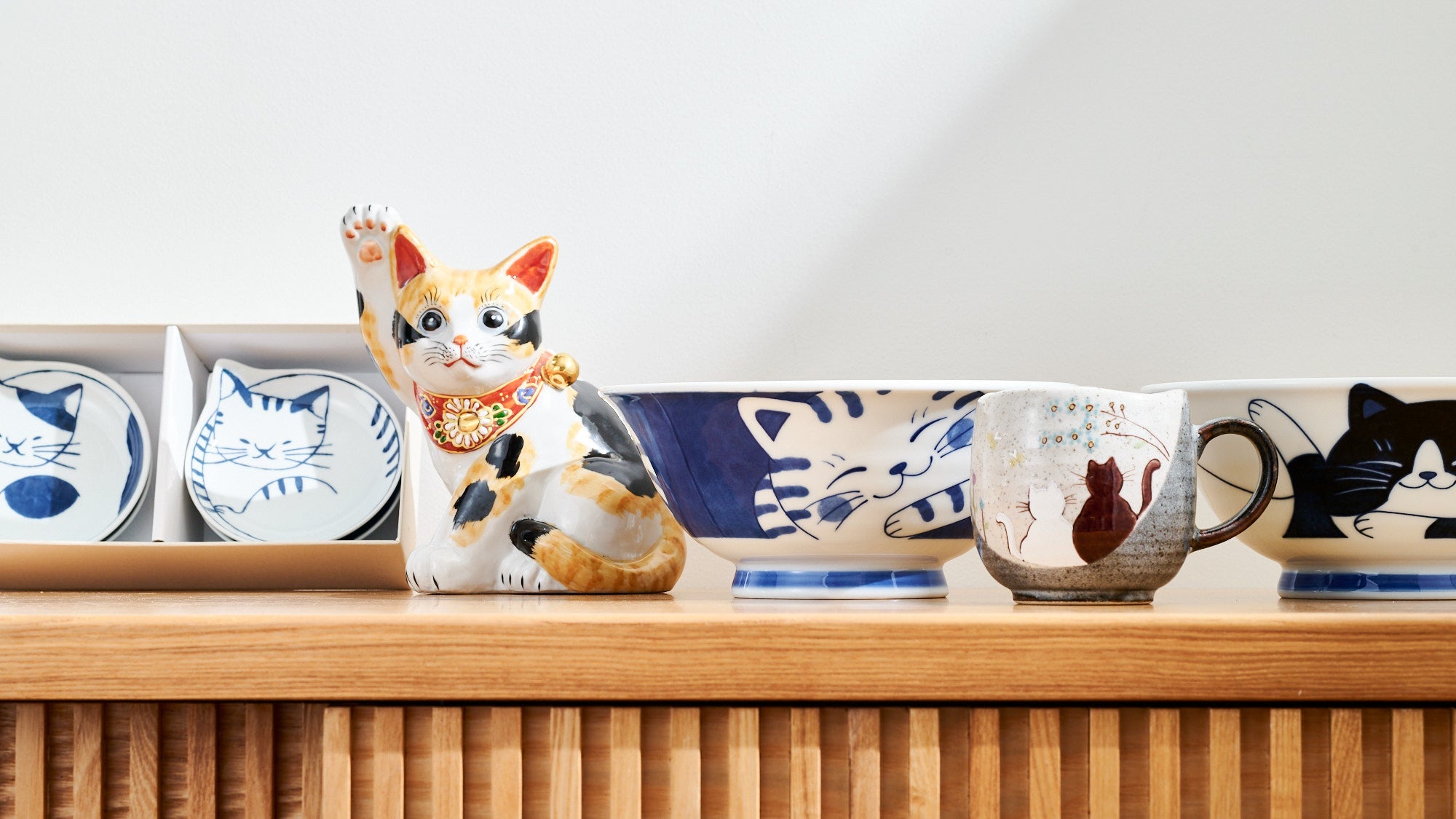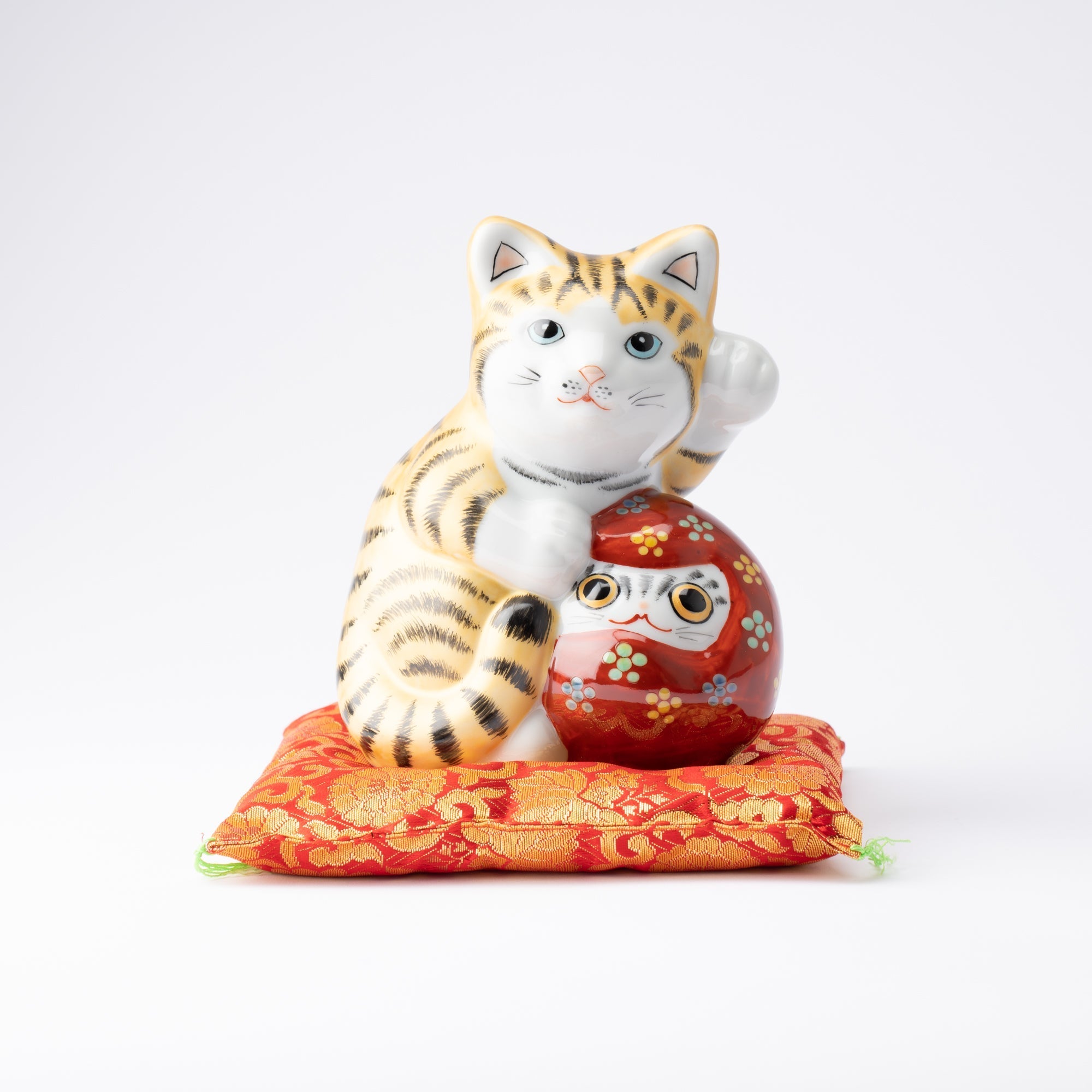
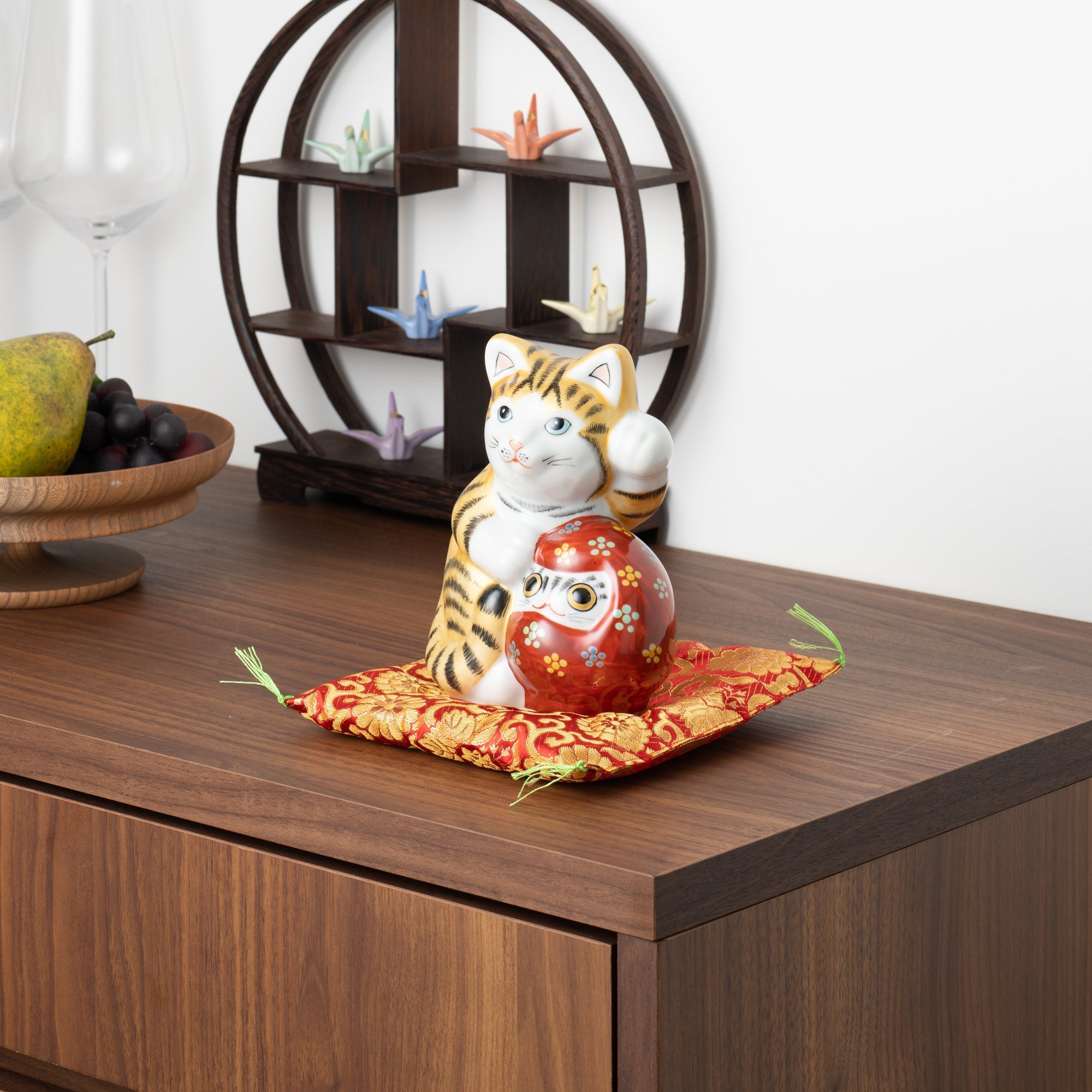
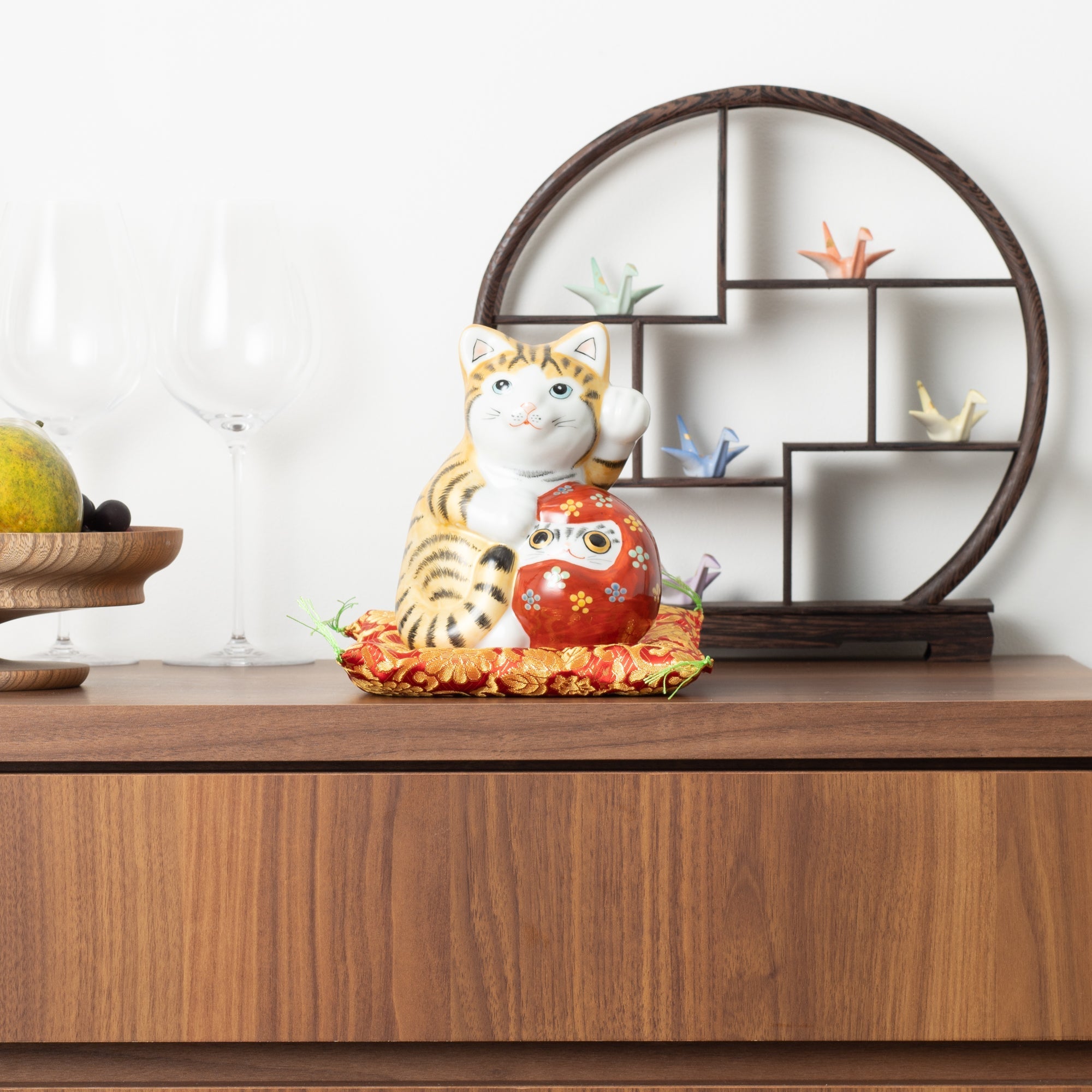
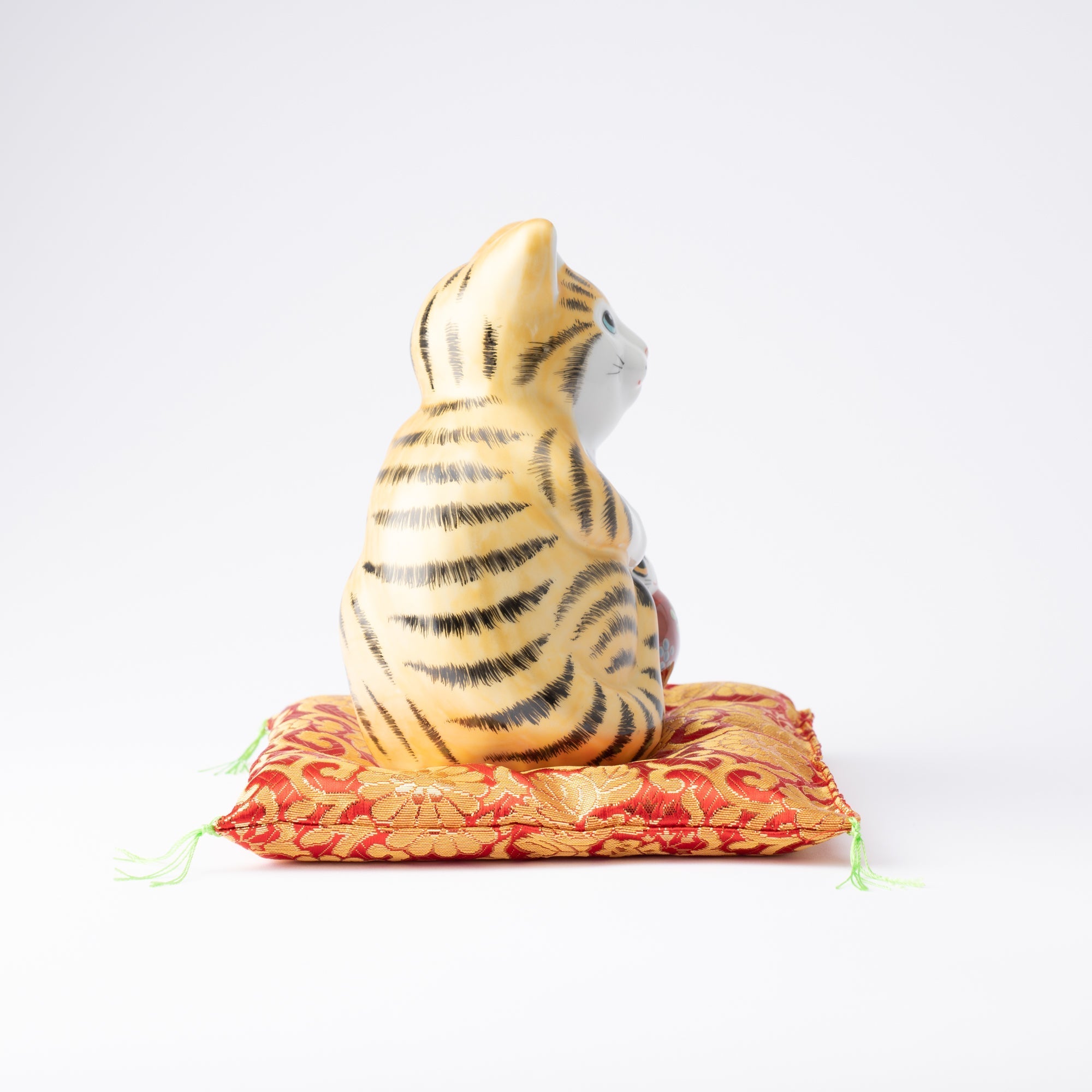
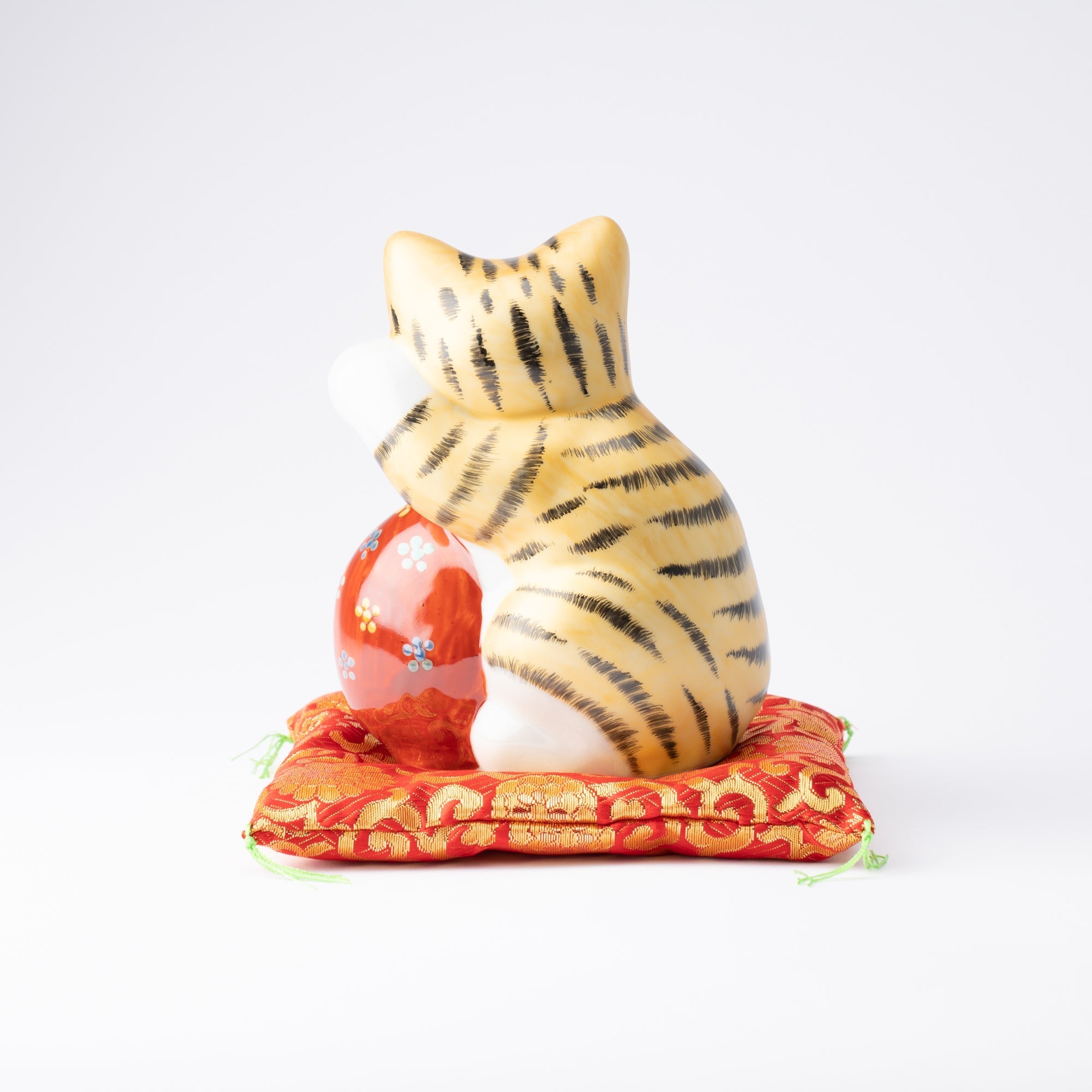
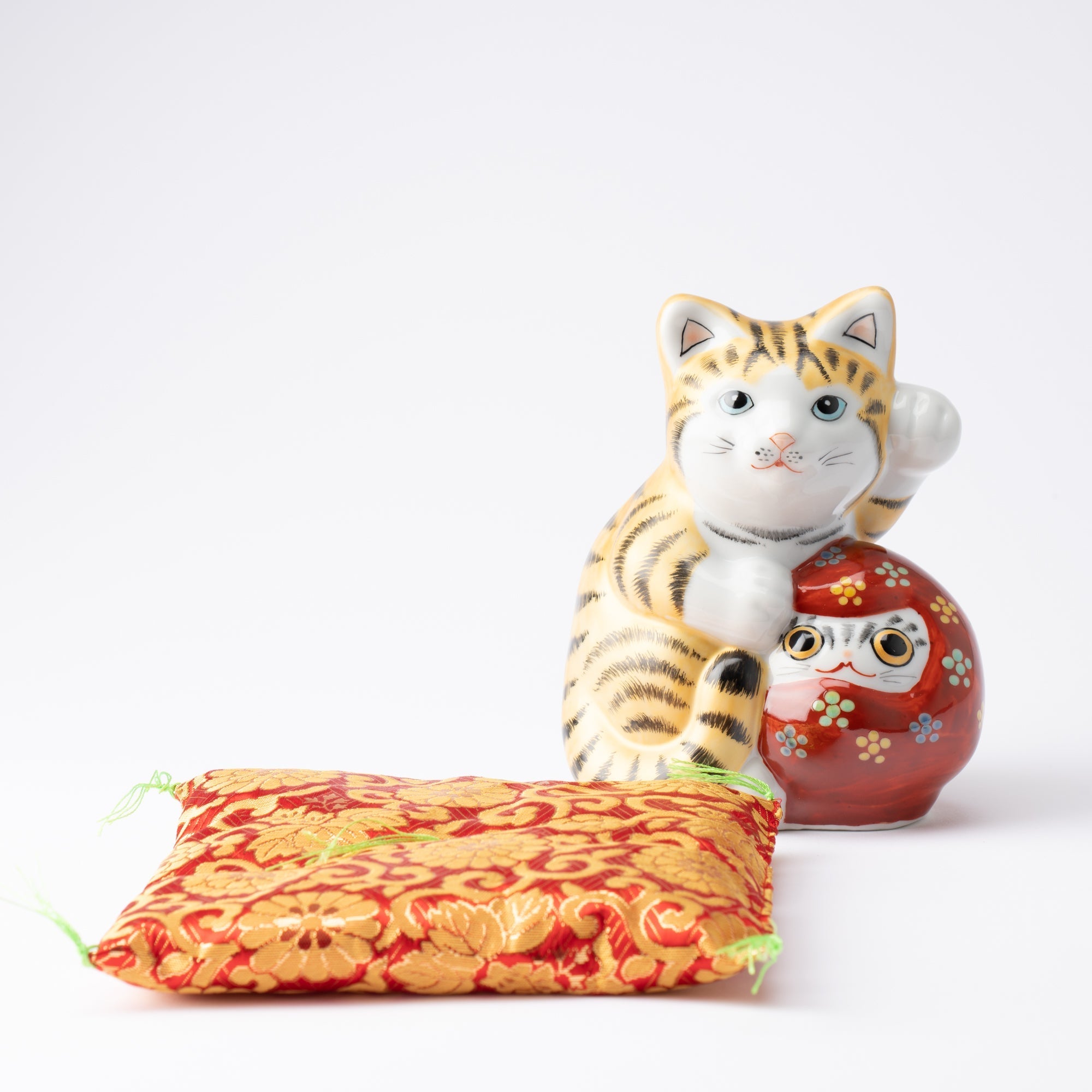
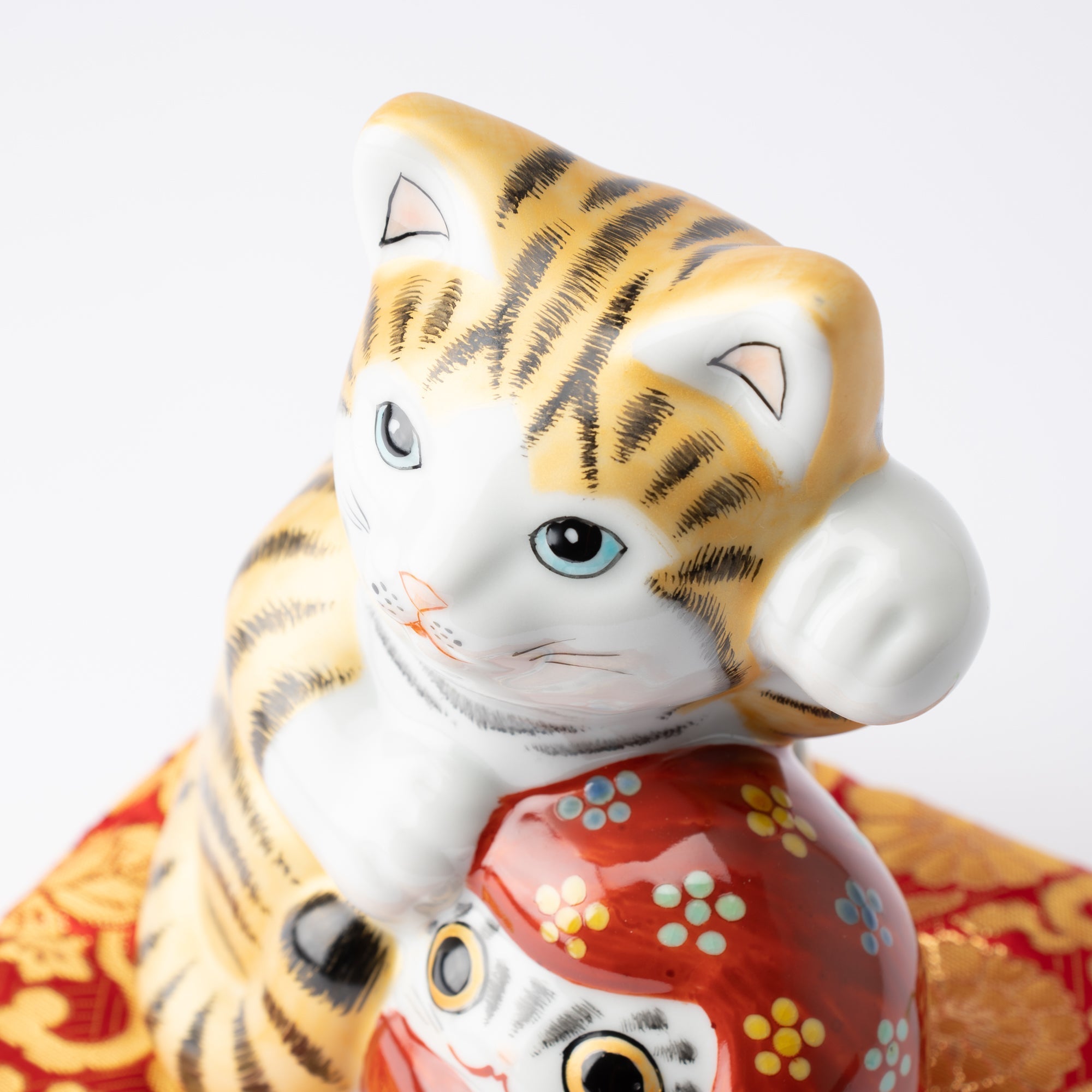
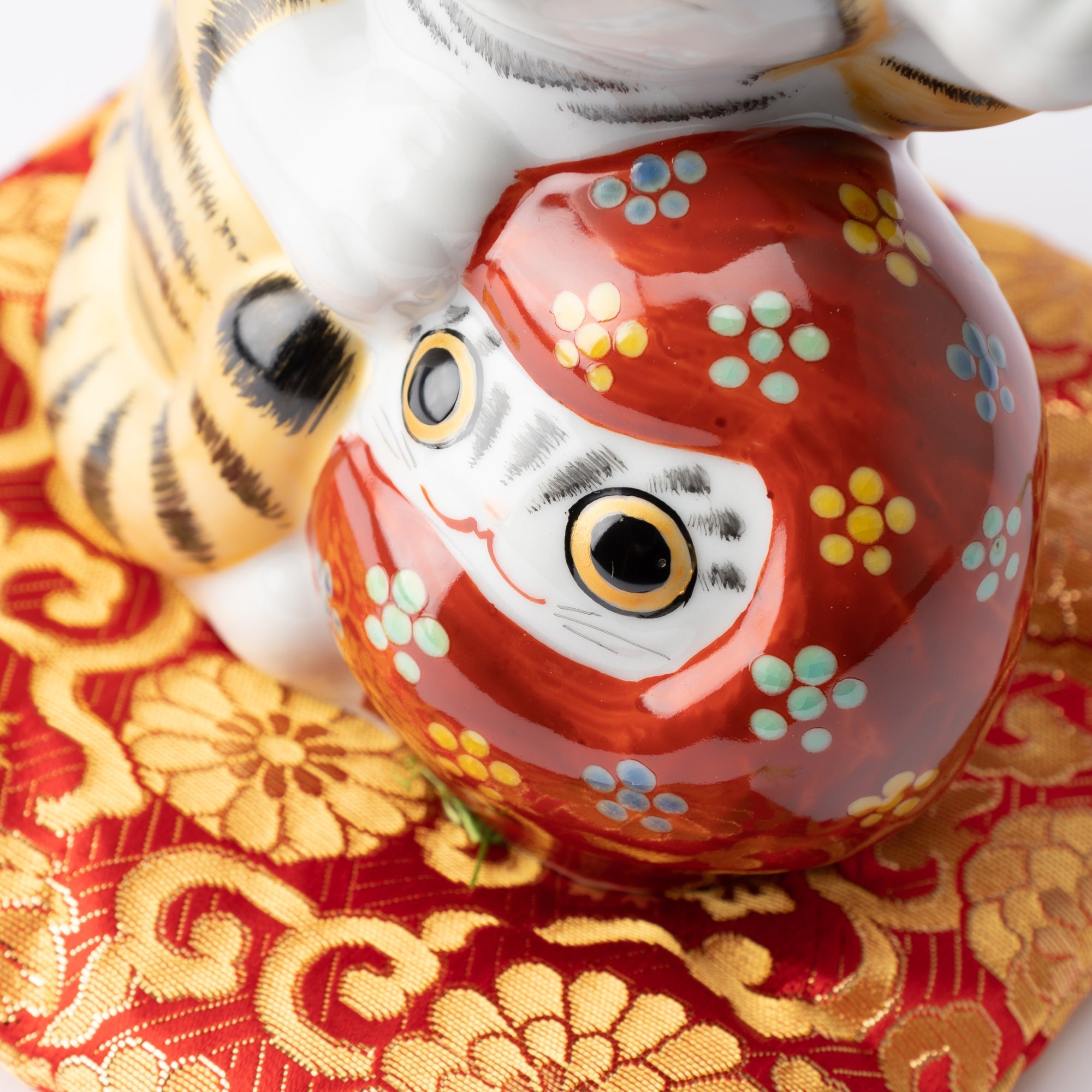
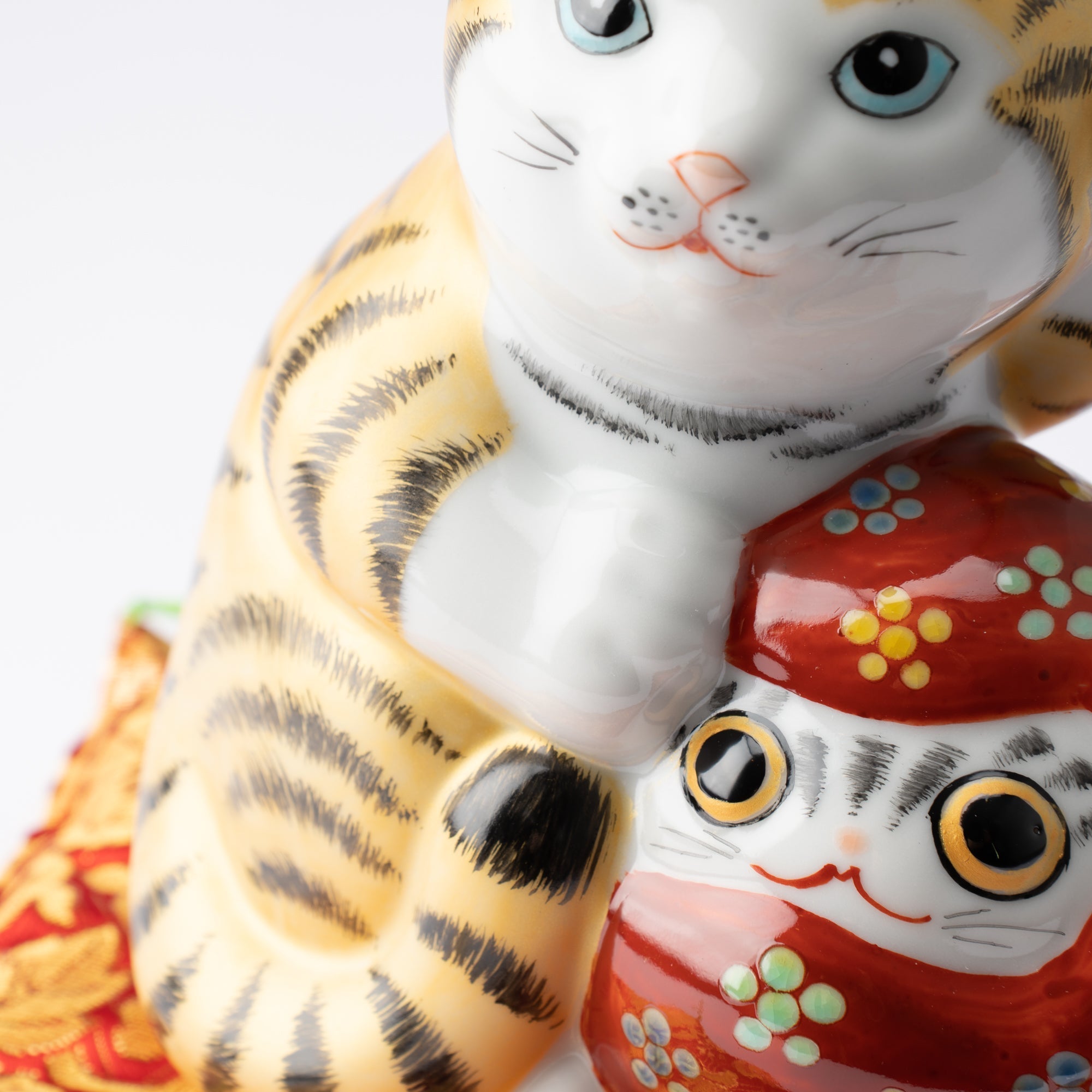
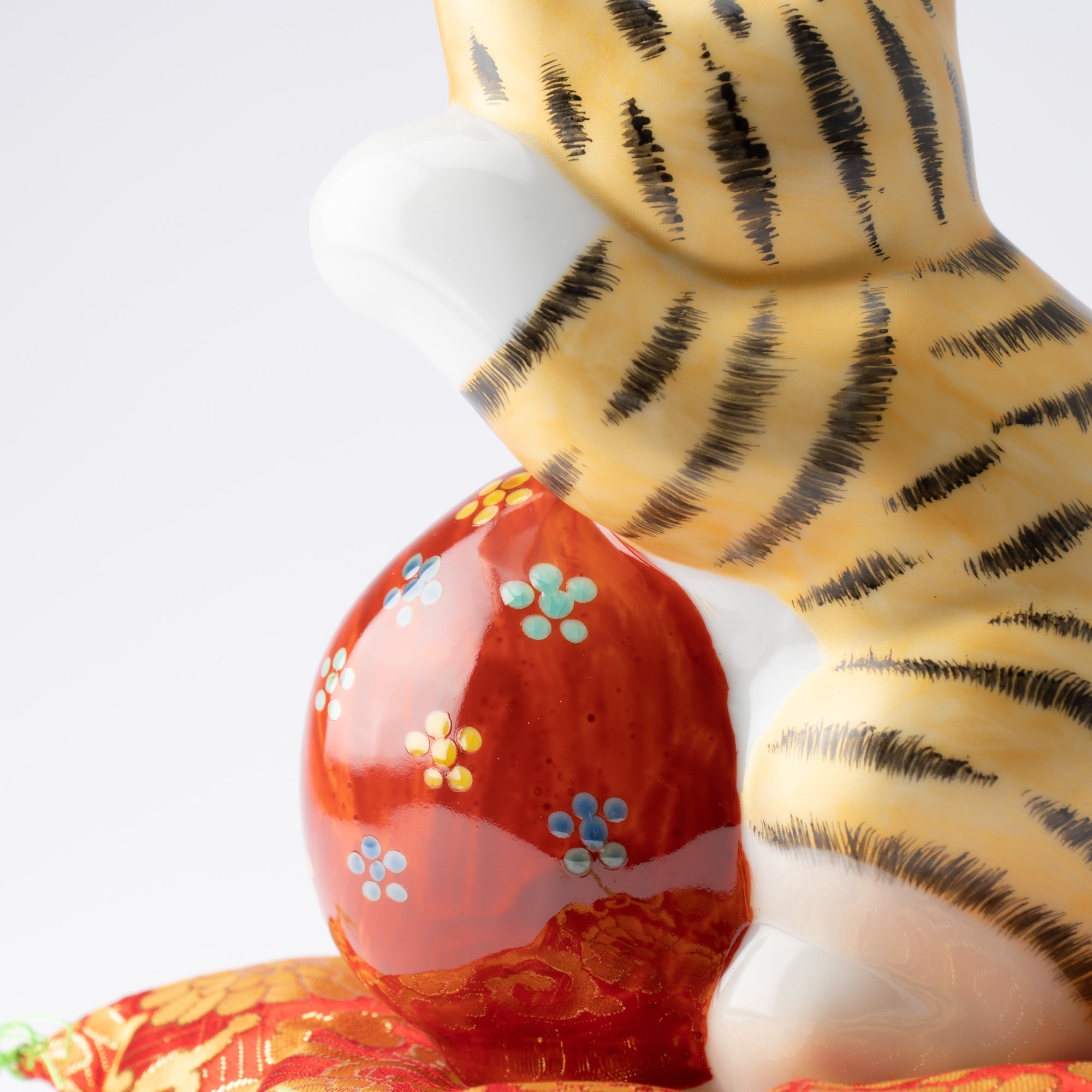
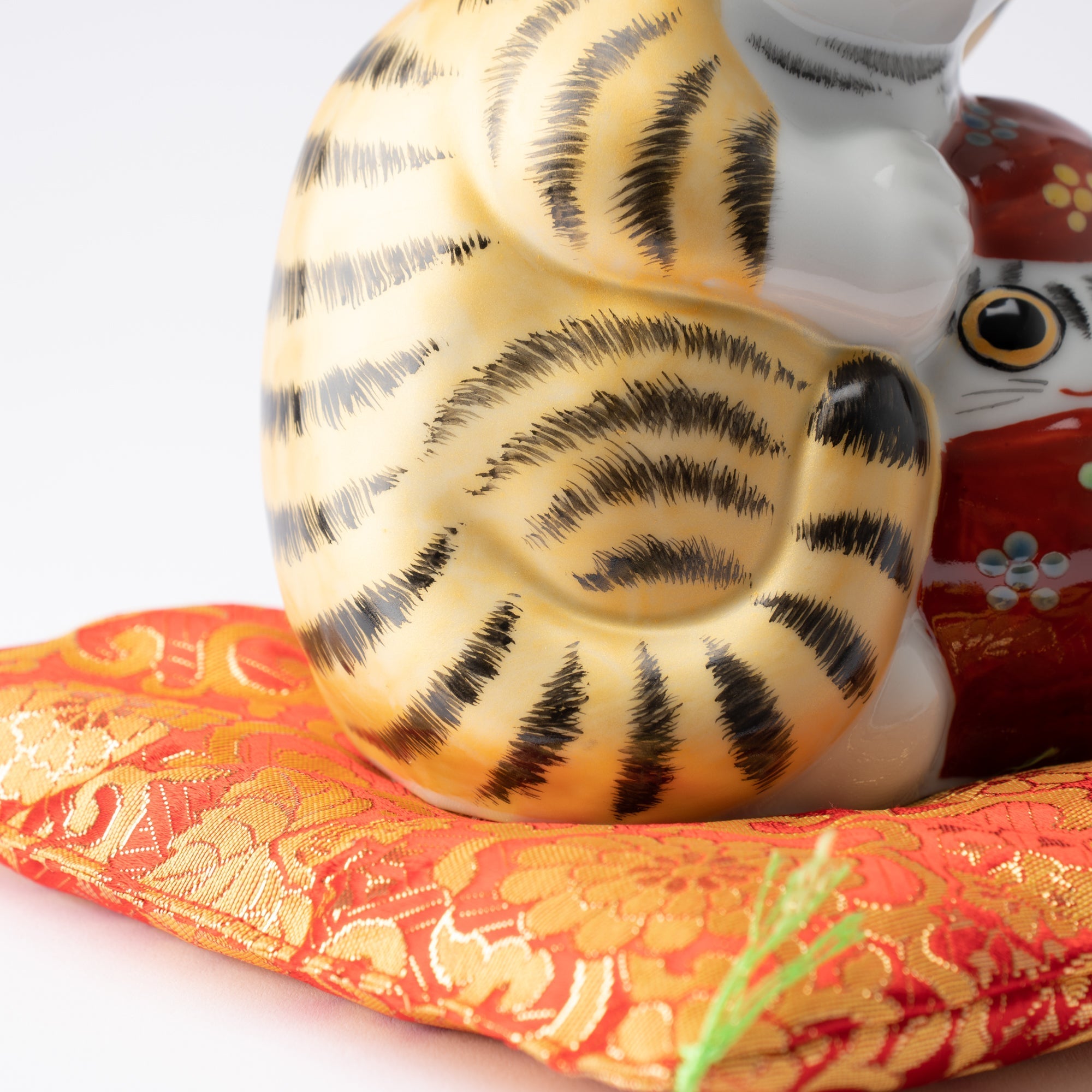
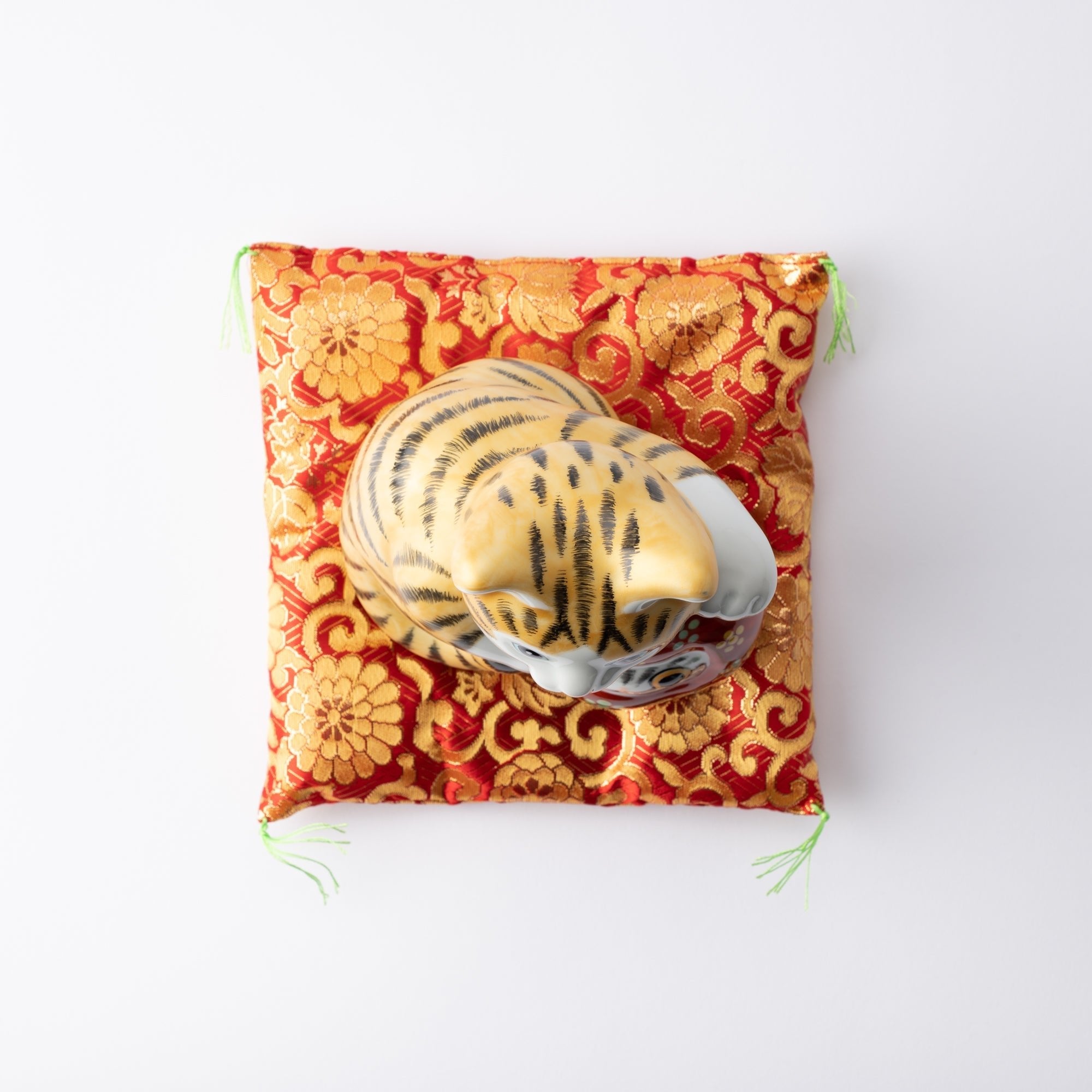
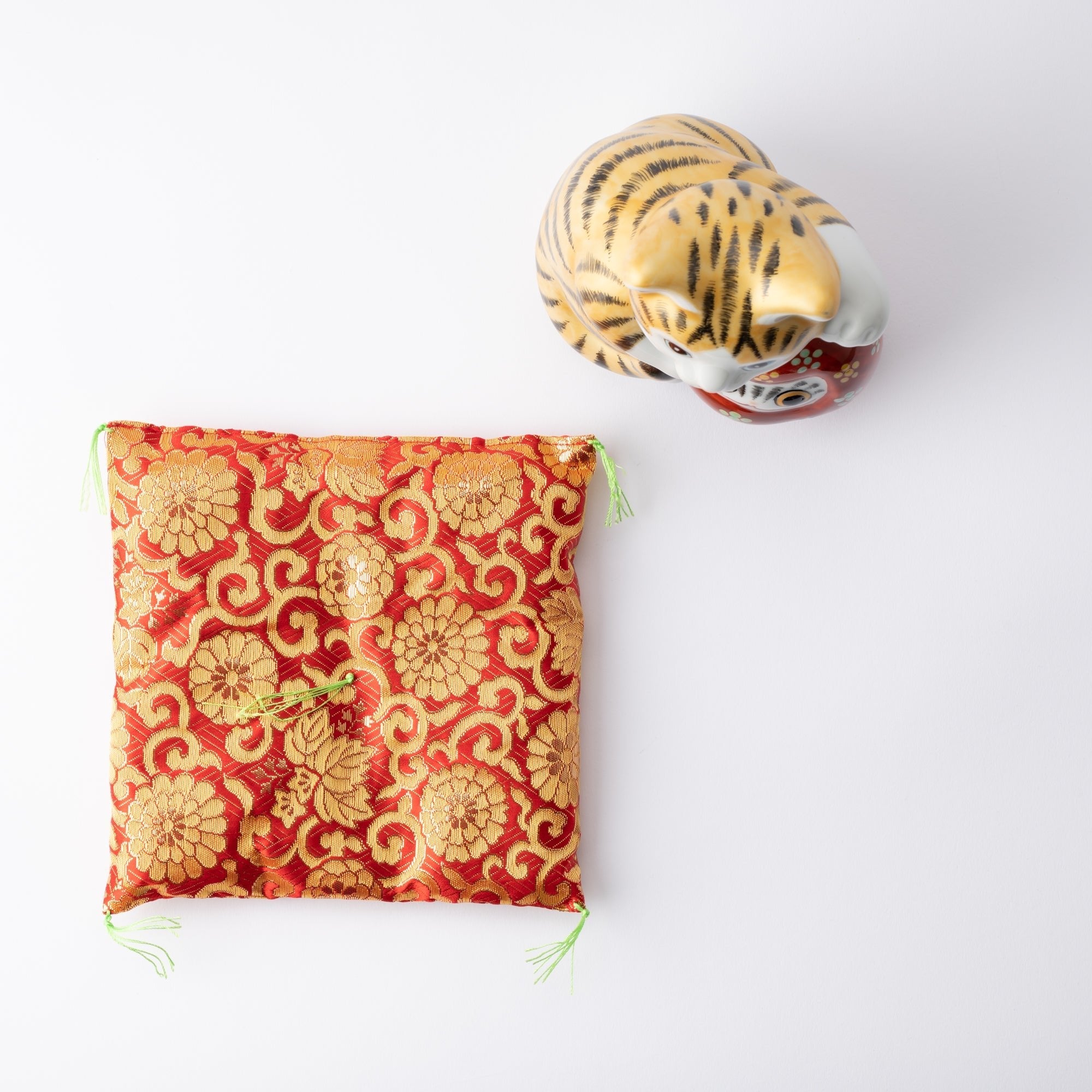
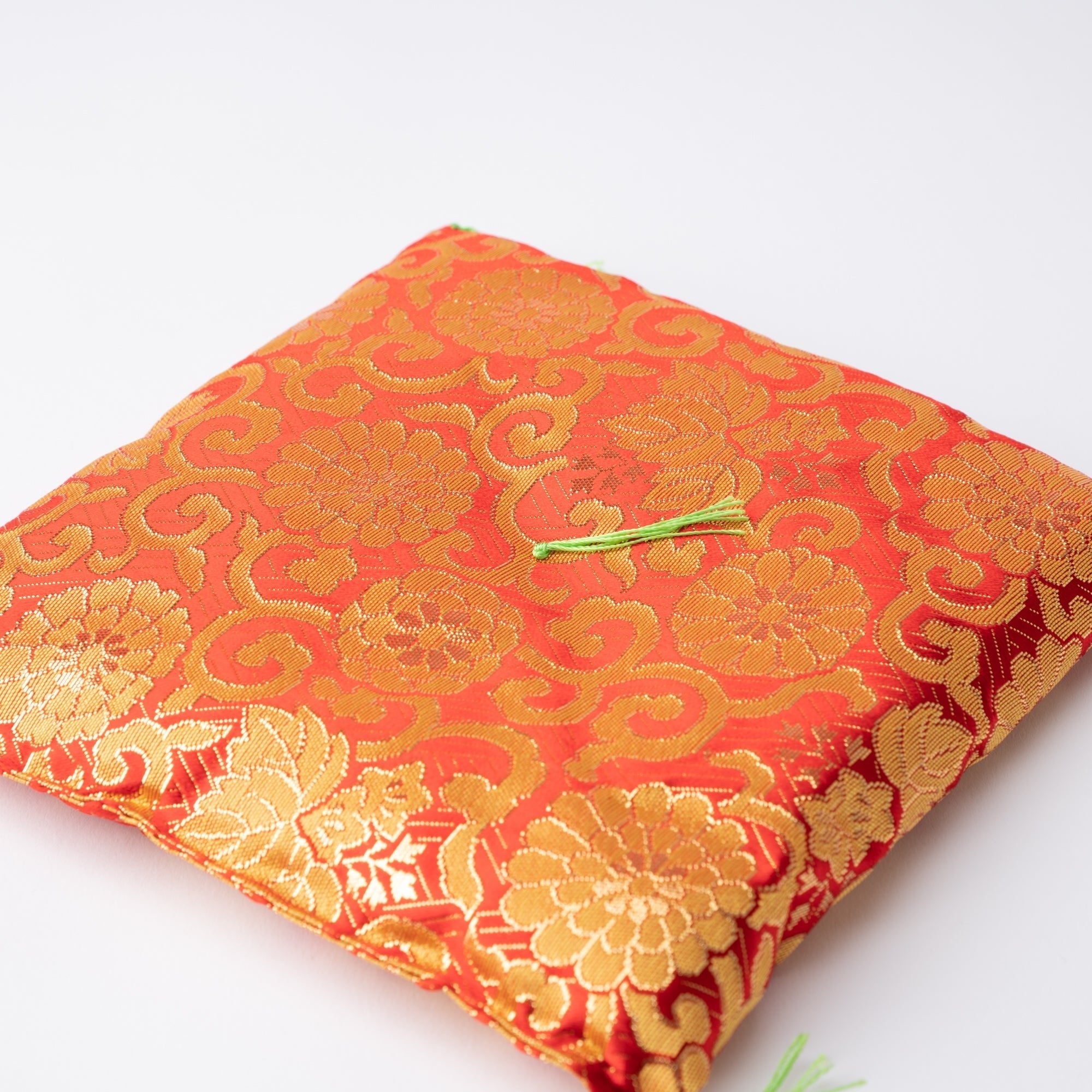
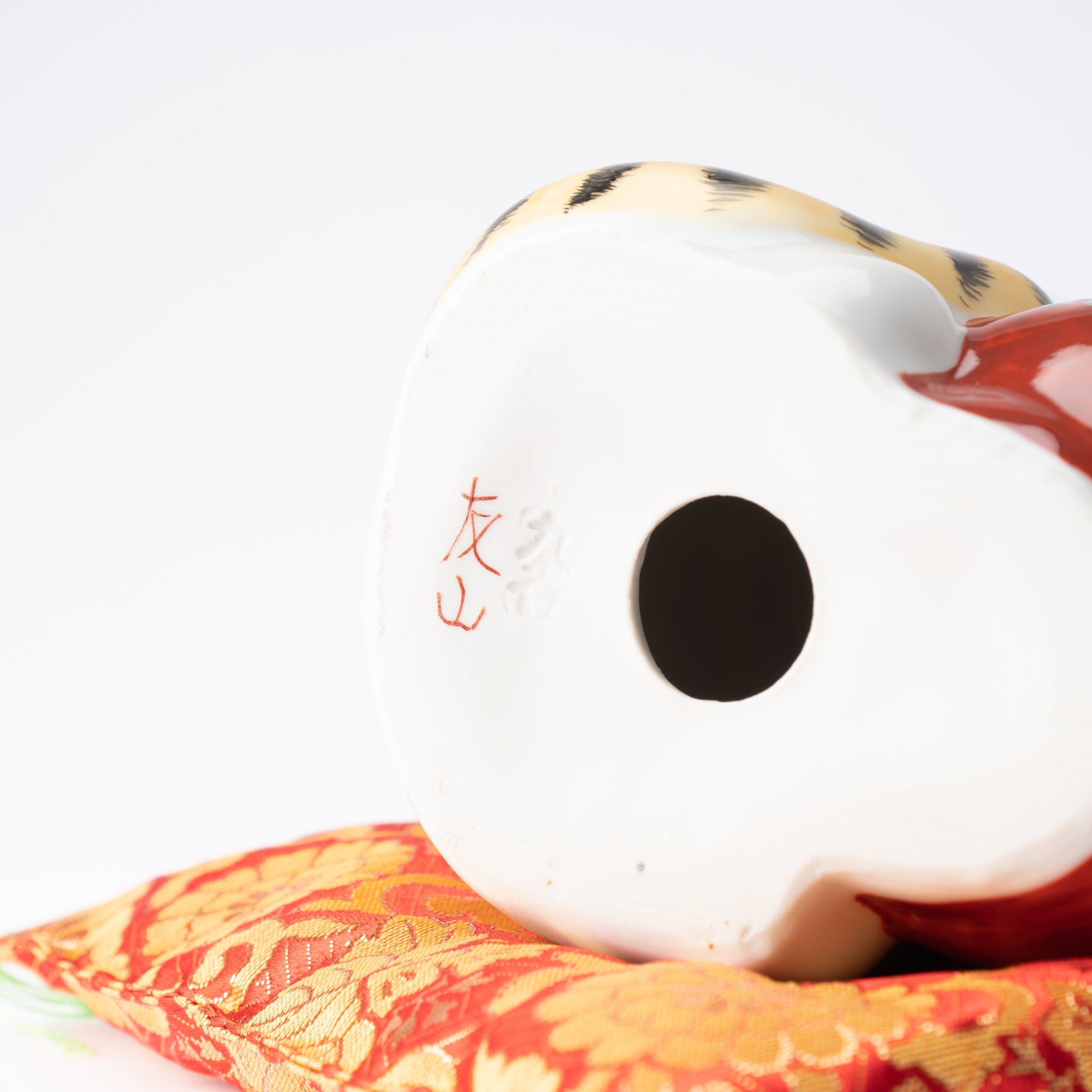
White with Daruma Lucky Cat
Estimated Shipping Widget will be displayed here!
This is a white calico cat's lucky cat with Daruma. It comes with a cushion, so it looks good when displayed. The white lucky cat means "good luck blessing".
Daruma is traditionally loved by the Japanese as a good luck talisman. It embodies perseverance and grit. Whenever you face difficulty, stand up and carry on until you achieve your goal.
A lucky cat facing sideways means to solve a problem from a different angle, which brings good luck. Also, a lucky cat with its left hand raised means to invite people in.
Filled with Japanese tradition and good fortune, this Japanese figurine is excellent for your house decor and brings good luck to you and your loved ones.
DETAILS
| Quantity | 1 |
| Size | L 12.5 cm (4.9 in) x W 9 cm (3.5 in) x H 15.5 cm (6.1 in) |
| Material | Porcelain |
Maker / Brand
Yoneda Yuzan Kiln has been offering beautiful decorative figurines for over 60 years. The tradition of Kutani ware is present in their works, with a painting technique called mori-e, which resembles slip trailing, applied to each piece.
The objective behind these beautiful figurines is to bring good luck and prosperity to businesses and families, while providing them with comfort and harmony at home.
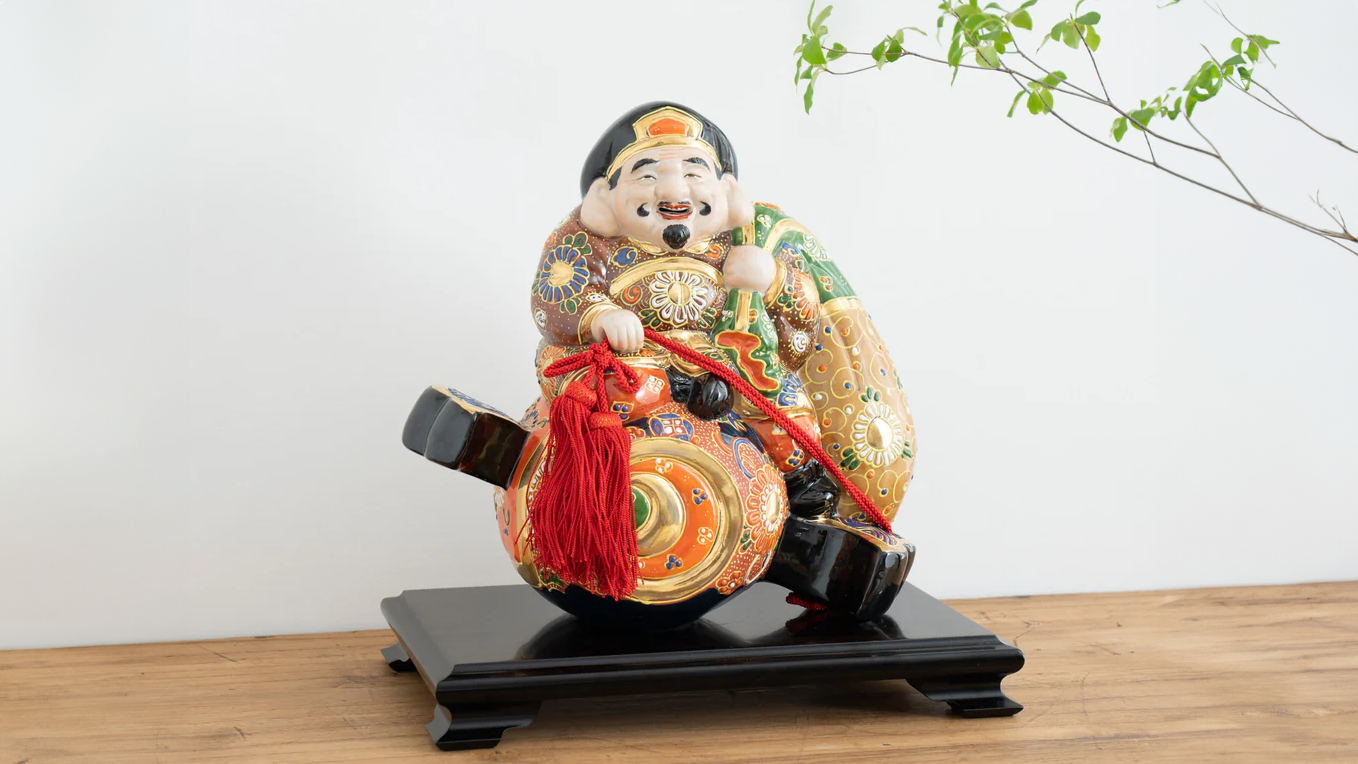
Crafts
Kutani ware is a pottery produced in the Kaga region of Ishikawa Prefecture, with a history spanning over 350 years. It is characterized by the heavy brilliance of the five colors of navy blue, red, purple, green, and yellow that are applied to the bold and daring lines. Its long history has evolved through the tireless efforts and enthusiasm of people who have sought innovation while maintaining tradition.
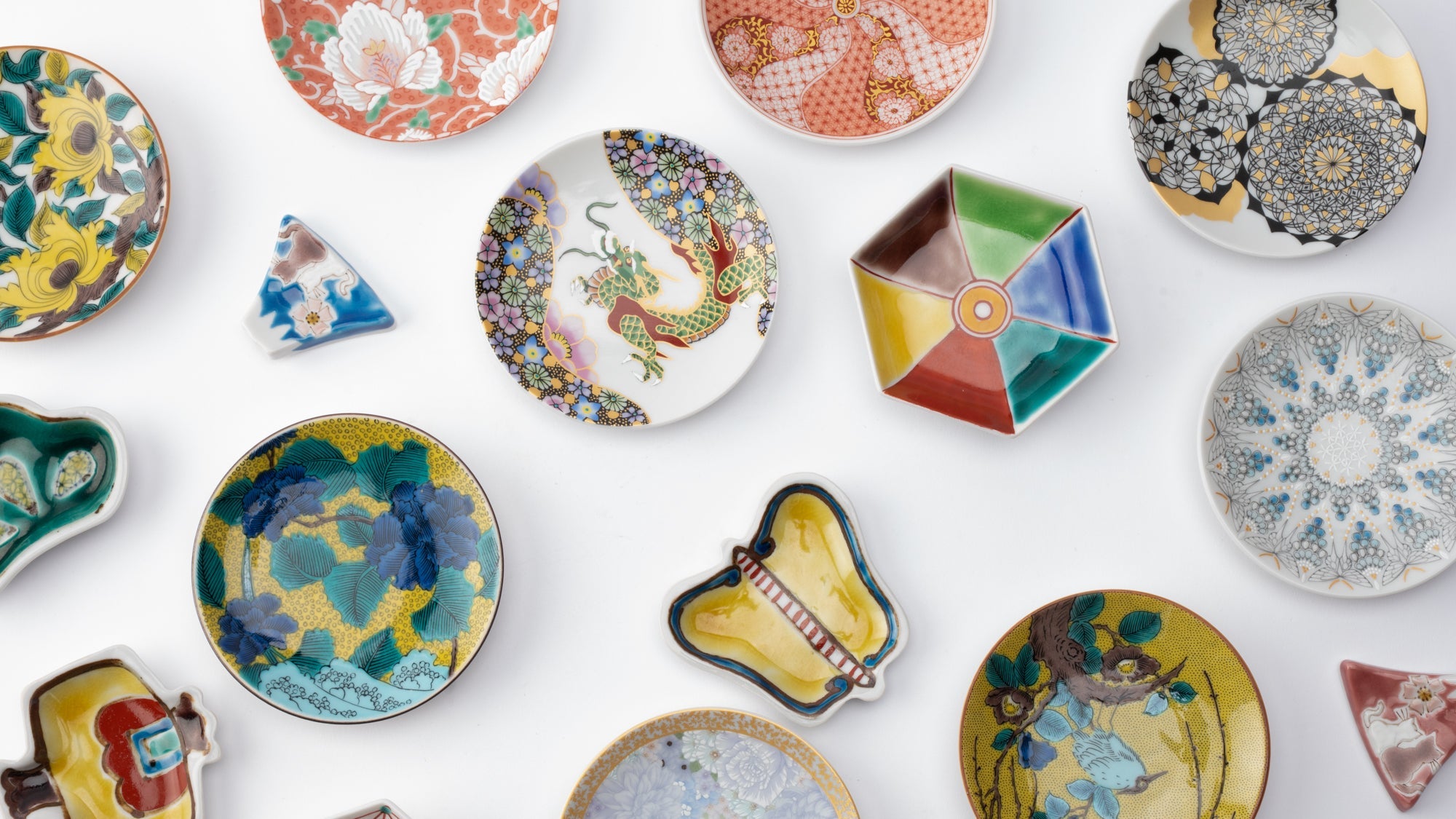
Choose options















Maneki Neko
Often referred to in English as lucky cats, maneki neko are iconic figurines in Japanese culture. Modeled after several folktales, they are said to beckon luck and, when placed at a storefront, potential customers. View the collection below to find a favorite maneki neko of your own to match your style and uplift your home or business.
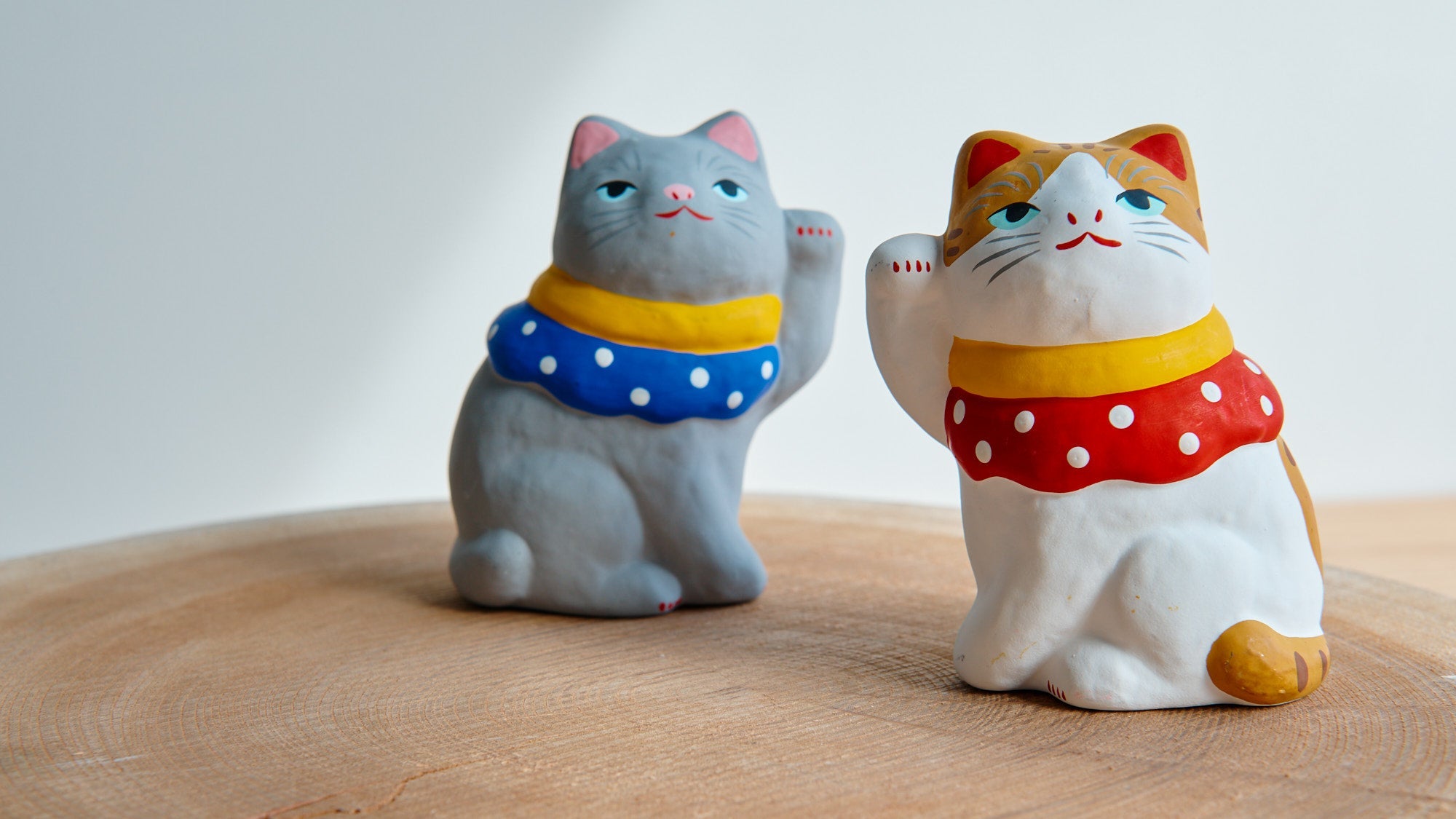
Cat
Cats hold a special place in our hearts with their love for sunny naps and playful antics. For fans of these whimsical creatures, our collection of Japanese cat-themed tableware and home decor is sure to delight. Cat plates and mugs bring a cheerful touch to your table, while lucky cat figurines charm with their unique presence.
Among our popular items is the Neko Chigura Cat series, featuring neko—the Japanese word for cats—that bring warmth and character to your meals.
